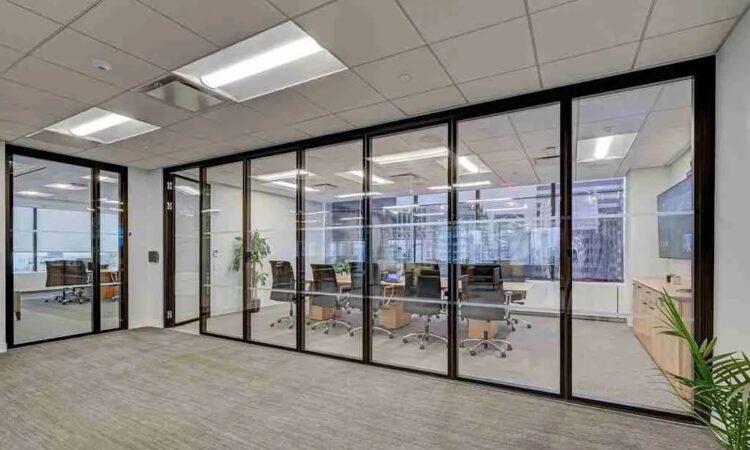
In modern organizations, open-plan offices are very common. They promote working together and being open. But sound travels easily in these areas. That’s why acoustic solutions are so important in these situations. One good technique to control sound is to use glass dividers. They make limits without closing things off.
The Challenge of Noise in Open Offices
Open offices allow light and space to flow freely. The absence of barriers makes communication easy. Yet this same openness lets sound move unchecked. A simple phone call can disturb an entire area. Conversations between colleagues can spread across desks. Typing sounds or footsteps can feel amplified. Noise accumulates quickly when no barriers are present. For many workers the constant distraction reduces efficiency.
Practical Fix: Glass Partitions
Glass dividers go beyond aesthetics. Their practicality benefits busy workplaces. This barrier blocks and absorbs sound well. They define but leave space open. A squad can meet quietly. Quieter nooks help workers concentrate. Natural light flows through glass, unlike solid walls. Light from nature enhances mood and minimizes lighting needs. Glass also connects personnel visually. That privacy-openness balance is crucial.
Balancing Transparency with Acoustic Control
The beauty of glass is its dual function. It provides transparency while supporting acoustic control. Modern glazing techniques enhance these qualities further. Double glazed options offer stronger sound resistance. Frosted or tinted designs add extra privacy. Frames and seals also play a key role. Well-sealed joints reduce sound leakage between rooms. Acoustic laminated glass improves insulation against disruptive noise. Therefore even busy offices can feel calm and organized. Workers benefit from both privacy and connection. Managers appreciate higher levels of efficiency and satisfaction.
Design Flexibility with Modern Glass Systems
The flexibility of modern systems makes them suitable for many layouts. Businesses can choose sliding panels or fixed walls. Each option addresses different workspace needs. Movable panels allow rapid changes in office design. Fixed walls provide a sense of stability and permanence. Architects and designers often combine glass with other elements. The blend of materials creates both function and beauty. Transparent walls enhance aesthetics without sacrificing practical needs. Partitions for glass office layouts combine elegance with acoustic performance. This combination supports long term workplace goals with lasting benefits.
Adding Value and Life with Glass
Glass is tough and low-maintenance. In busy offices, it resists wear. Glass feels stronger than makeshift partitions. An investment in office quality over time. Frequent replacements and repairs save companies money. Design changes also affect glass partitions. They match changing office branding and furniture styles. Even as layouts alter, acoustic enhancements work. Natural light also saves energy. Thus, glass provides permanent value beyond acoustics. Visitors and clients like its professionalism.
Conclusion
Acoustic privacy ensures a balanced environment where people can think clearly. Glass partitions answer the challenge with elegance and function. They block sound without reducing openness and natural light. Modern designs add flexibility and long lasting durability. By protecting focus and privacy they support healthier work conditions. Businesses gain happier employees and more productive teams. Glass provides sound solutions that look modern and perform effectively. The result is a workplace that feels open yet calm and truly efficient.




